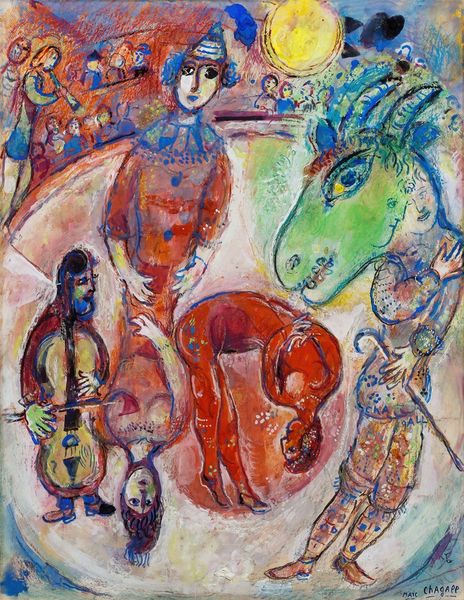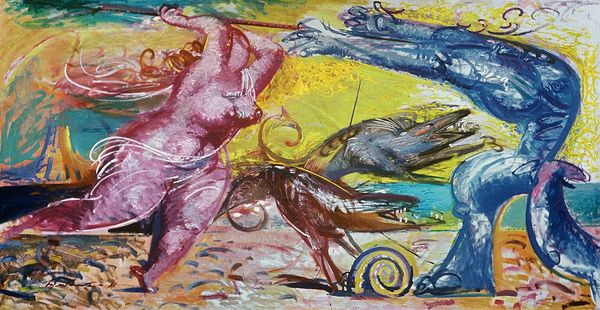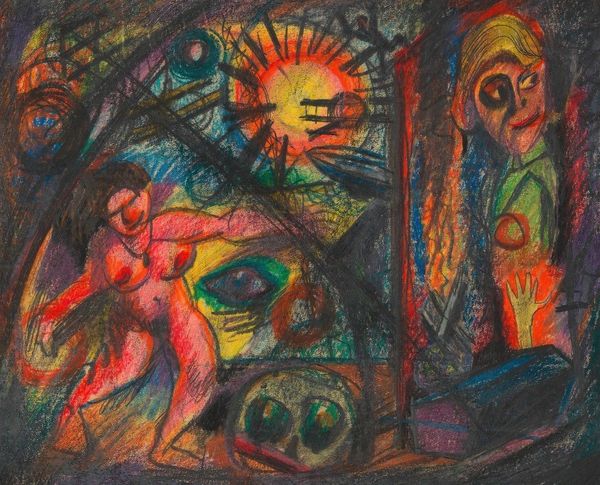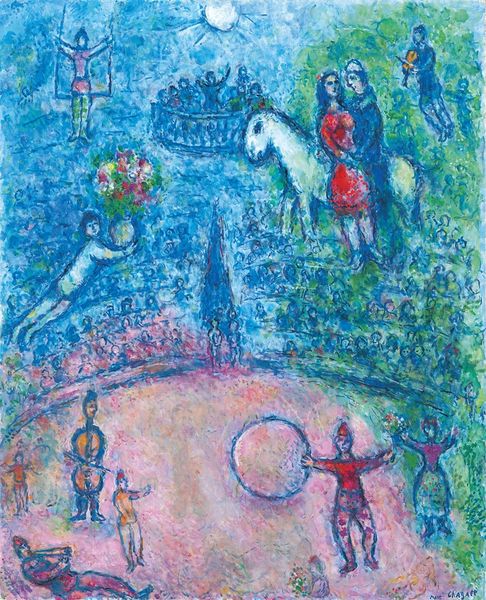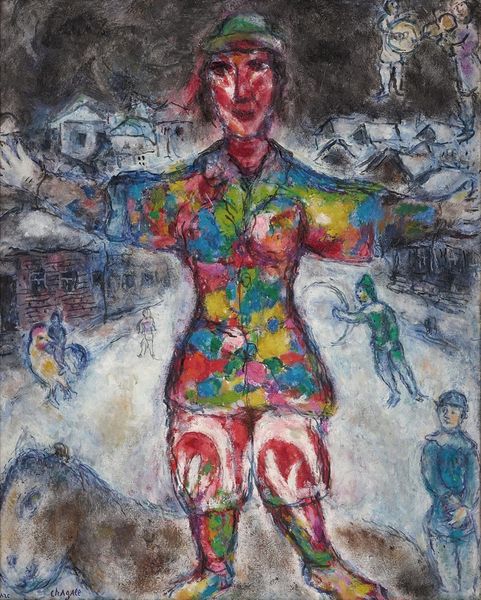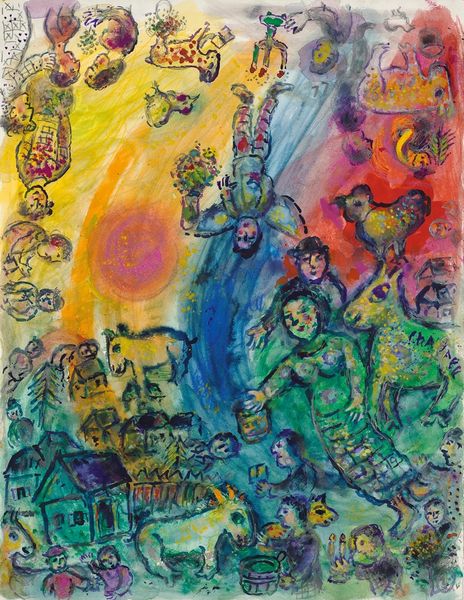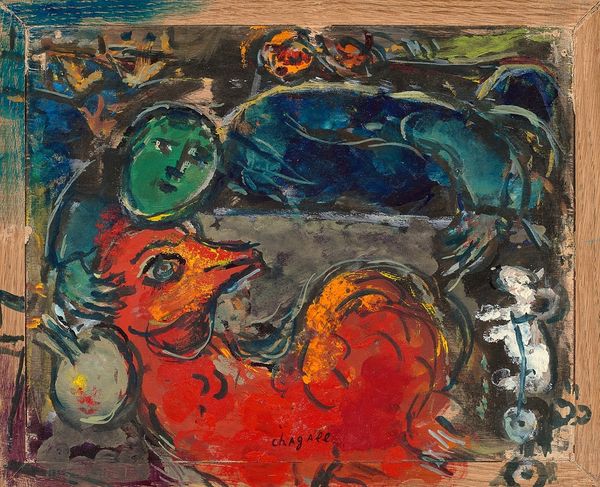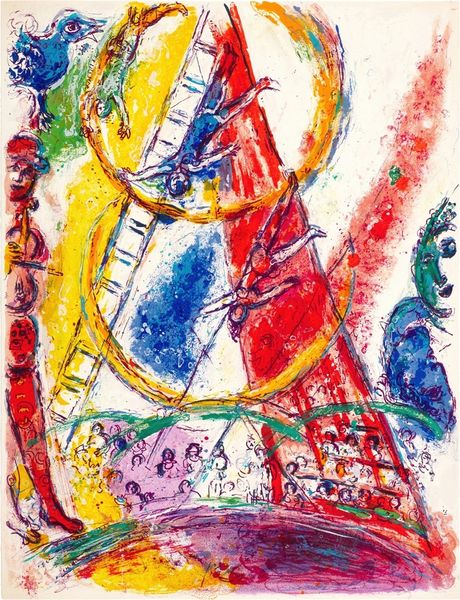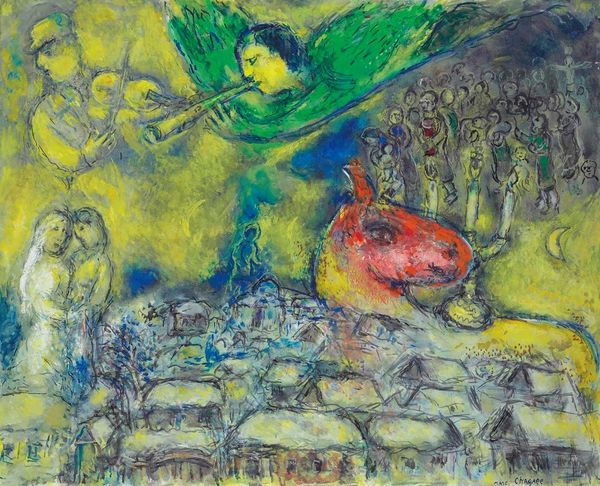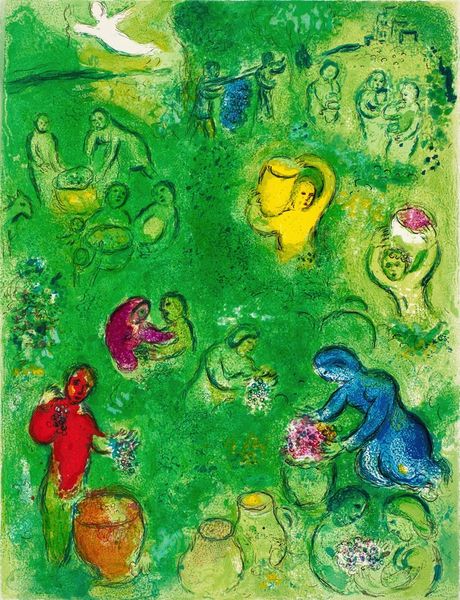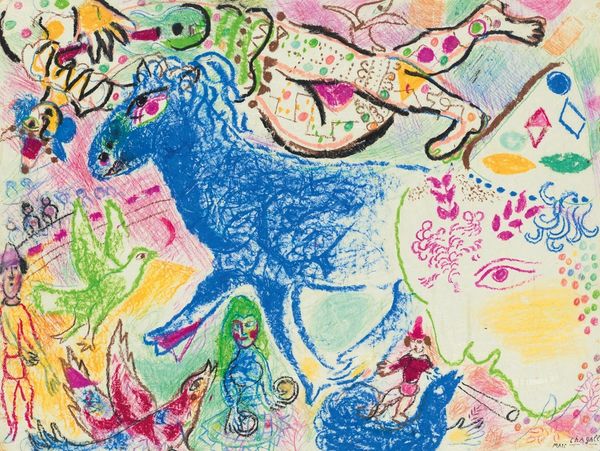
Copyright: Modern Artists: Artvee
Curator: Welcome. Today, we are considering "Le Cirque 5," an oil painting created in 1967 by Marc Chagall. Chagall, born Moishe Segal in present-day Belarus, navigated both Jewish and Russian culture and went on to embody modern art’s intersectional aesthetics. Editor: Well, the circus comes to town, doesn’t it? Immediately, I feel like I've walked into a dream. The colors vibrate – that blue is electric! And those...are those rosy-cheeked bears riding on, well, plinths above the audience? Bonkers! Curator: Yes, it is indeed characteristic of Chagall's style to interweave dreams and reality. The circus theme, appearing throughout his oeuvre, becomes a stage where one can explore themes of displacement and alienation – particularly relevant given Chagall's own experience as a Jewish émigré navigating shifting geopolitical landscapes. Editor: Absolutely, I get that. It’s not a cheery-clappy-hands circus, is it? There's a longing in that reclining figure, a melancholy mirrored by the blue conductor figure and the...shall we call them spectators in the background? Everyone is an island, connected yet separate, trapped in the grid. Curator: Precisely! Chagall, influenced by fauvism and surrealism, uses these vibrant, almost clashing colors to disrupt conventional representations, drawing on deep reservoirs of emotion. And note how he subtly critiques the architecture of control through his employment of grids. Editor: Grids, grids everywhere! Imprisoning performers, imprisoning the audience… Look at those little, doll-like faces peeking from behind the bars. This isn't just about personal displacement. There's a societal commentary, hidden within this chaotic fairytale world. Or, am I reading too much into rosy-cheeked bears on podiums? Curator: No, I believe your interpretation aligns very much with Chagall's own life journey and commitment to representing marginalised experience and his criticism of structures of control. Even the deliberate crudeness of line amplifies the inherent anxieties of the period. Editor: You’re right. It’s more than just paint on canvas; it’s a portal, isn't it? I am seeing not only my world but something far bigger in this circus. Something beautiful. And terribly, terribly sad. Curator: A crucial dialogue, wouldn’t you agree? One that enables us to see and reconsider not just the aesthetics but also the socio-political impact of modern artwork. Editor: Couldn’t agree more. So much for simple circus joys, huh? Gives a clown a whole new weight.
Comments
No comments
Be the first to comment and join the conversation on the ultimate creative platform.
